Text
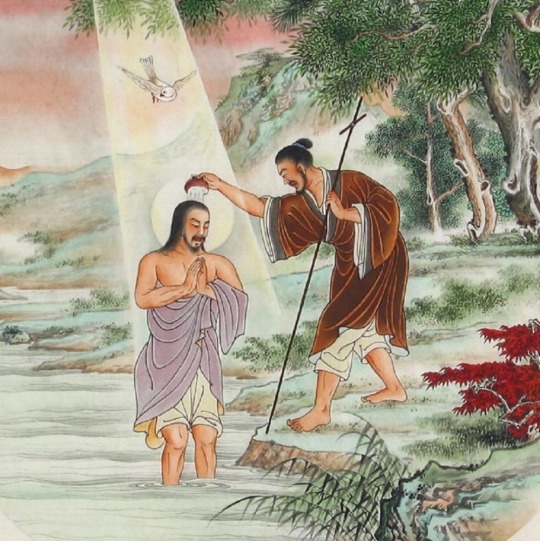
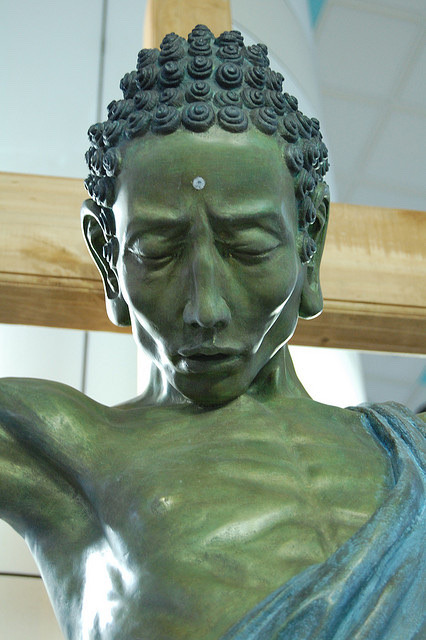
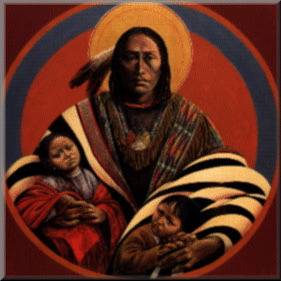

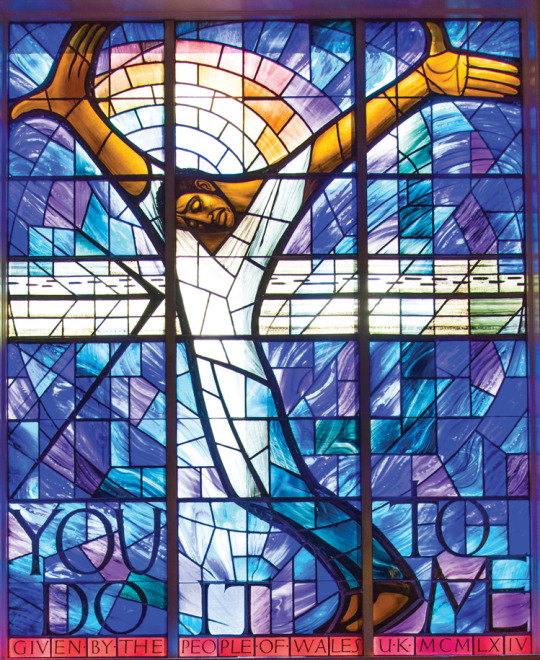




jesus-depictions in different cultures;
chinese jesus at his baptism // korean jesus is at peace on the cross // native american christ shows compassion // japanese theotokos // the wales window for alabama // chinese-american artwork called „peace, be still“ // british „christa“ that depicts christ as a woman // ethiopian icon // aboriginal crucification
2K notes
·
View notes
Text
The difference between Satan, Devil and Lucifer
In current times, Lucifer, the devil and satan are all seen as the same being, sometimes even roping Baphomet in. However who truly is satan? Or what?
Many ideas we have of the devil come from both noncanonical books and media presentations of the being.
Satan: The Abrahamic antithesis of good, first referenced in the Hebrew bible as Yetzer Hara or evil inclination. Within the Taknuh, Satan is seen as a more metaphorical, evil in form of personification, with the name ha-satan translating to the adversary or the accuser, known to reference both human and supernatural forces opposing to man. In the Christian new testament of God, Satan, or the original translation being “Satanas” is a far more literal figure, tempting jesus in the desert, and is described as "the ruler of the demons" (Matthew 12:24), "the evil one" (1 John 5:18) etc and is placed in contrast once again to the Lord.
“Then saith Jesus unto him, Get thee hence,
Satan: for it is written, Thou shalt worship the
Lord thy God, and him only shalt thou serve.” Mathew 4:10
Again he is translated to be more metaphorical, occasionally, dependant on the interpretation.
Lucifer: Named after most relation of venus, also being translated as the morning star in the bible during king James’s translation, originally related to satan in a book called paradise lost. Originally it is possible Lucifer or the falling star of Venus was related to the fall of satan. as the book of Isaiah ok of Isaiah 14:12: "How art thou fallen from heaven, O Lucifer, son of the morning! How art thou cut down to the ground, which didst weaken the nations." with luke 10 "I saw Satan fall like lightning from heaven". This possibly was because of the capitalization of Lucifer. The word Lucifer came from the translation of “Helel” within the Hebrew texts to the Latin lucifer.
In Roman mythology, Lucifer was the son of Aurora, the goddess of dawn. He was depicted as a man with a torch and was often presented in poetry as the one who heralded the Dawn.
Devil: The name Devil comes from the greek diábolos, the deceiver or the slanderer, roughly brought into common use around the middle ages and is used as well as Lucifer and Satan in the everyday.
Beezlebub: Beezlebub was originally a philistine God, an area on the south coast of Canaan. His name is associated with the Canaanite a God Bal, also known as owner or lord, with Ba‘al Zebûb translating to the lord of the files. They have been adopted into the Abhramic religions as a major Devil or demon, possibly in ways of demonizing the Canaanite religion
#Thank you so much for the addition!#lucifer#bible study#bibliophile#bible teaching#trixie espinoza#devil
329 notes
·
View notes
Text
Carving swords:
Saw method:
(Quicker but worse for details)
Hard oak or beech plank
Leather for the handle
An arched saw
Clamp
A marking substance (Charcoal, ink)
File
How to Carve your sword:
Clamp the plank to the table firmly, so it is horizontal.
Place the guide upon the plank
Marl out the area under the guide
With the saw, begin the carve out the shape marked by the ink, carving away from you.
Once fully carved, file the handle and crossguard to round them out.
File the blade edge to point, depending on which type of sword you desire.
Bind the leather wraps around the handle
Chisel method:
(Better for details, but requires smooth wood)
Hard oak or beech plank
Leather for the handle
Sword or sharp knife
Clamp (Not necessary but helpful)
A marking substance (Charcoal, ink)
File
Chisel
How to Carve your sword:
Clamp the plank to the table firmly vertically
Place the guide upon the plank
Mark out the area under the guide
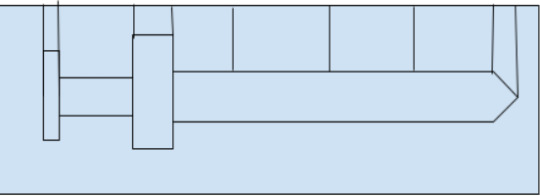
With the saw, carve down the wood to the guide at each change of width or every 2 inches, whatever comes first
Chisel the wood, starting from the hilt and working your way up. Angles should be carved last.
File the handle and crossguard to round them out
File the blade edge to point, depending on which type of sword you desire.
Bind the leather wraps around the handle, and knot tightly. Can also be attached by drilling a small hole through the hilt, and stitching the leather together, before looping it through the hole and tying it firmly.
#survival#odd tips#sword#sword making#the more you know#fantasy#Larp#medivial#carving#Art#art tag#art style
4 notes
·
View notes
Text
Kick the Bucket List
Have a tattoo sleeve
Go to Ireland
Get a tattoo
Chocolate factory
Adopt a cat
Compliment a stranger
Do some charity work ✓
Graffiti wall
Kiss in the rain
Any make your own store
Intern in a sweet store
Slowdance in a field
Steal some corn
Save a fish from an American store
0 notes
Text
Some interesting photographers
Because life needs more art
Laura Makabresku
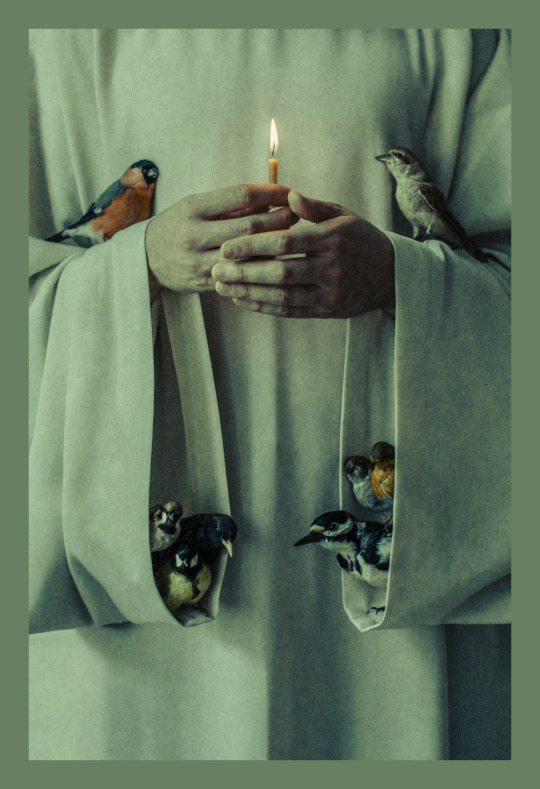
From their heart of my life Selection
They use a range of techniques to create a soft fantasy feel with strange and surrealistic concepts. Her lighting is often soft, with saturation increased, increasing earthy tones in contrast to whites and a blueish hue for a base. This use of a muted palette creates a dreamlike softness, however, the surrealist content of her works is in harsh contrast, displaying odd and sometimes disconcerting scenes.
Natalia Drepina
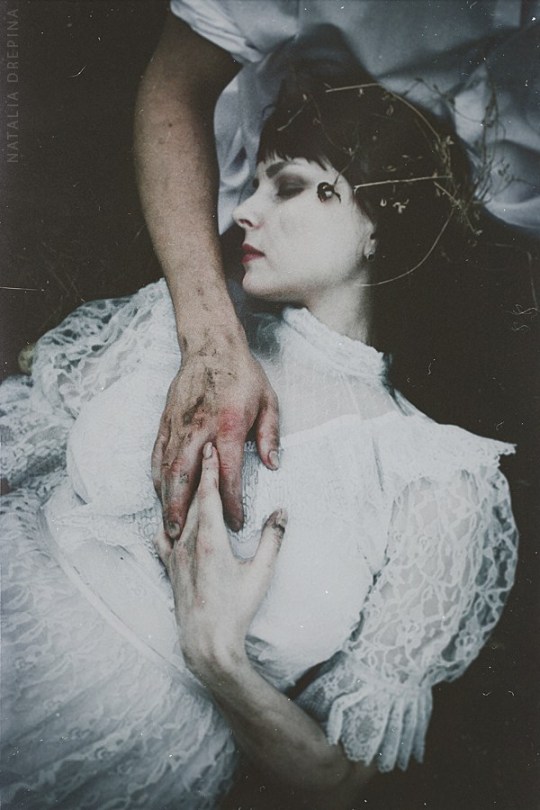
Untitled
Natalia Drepina focuses on dramatic lighting and harsh contrasts in palette juxtaposition cause the viewer's eye to immediately be brought to the centre of the picture. Displaying the correct themes. She commonly uses black and white backgrounds with pale subjects, with bright objects to draw attention. I particularly enjoy her use of vintage styling and witchy elements.
#art#water witch#mindfulness#witch#photoart#beautiful photos#photograph#photografy#photooftheday#photoblog#retro#photographer#photoset#urban#art history
14 notes
·
View notes
Text
TCPS/IPs
TCP/ IPs decide how information should be packaged and sent between the servers and clients. TCP (transmission control protocol) ensures reliable transmission and IP (Internet Protocol) packages information ready for transfer. An IP packet header provides an IP address for both the client and the server.
Layers of TCP/ IPs:
Network Access Layer - This layer is concerned with building packets.
Internet Layer - This layer uses IP (Internet Protocol) to describe how packets are to be delivered.
Transport Layer - This layer utilizes UDP (User Datagram Protocol) and TCP (Transmission Control Protocol) to ensure the proper transmission of data.
Application Layer - This layer deals with application network processes. These processes include FTP (File Transfer Protocol), HTTP (Hypertext Transfer Protocol), and SMTP (Simple Mail Transfer Protocol).
An HTTPS address means that anyone monitoring your internet use can access your IP address and the server with which you are communicating, but what is being transferred easily. HTTPS URLs are mainly used on indexed search engines to provide safe access to the public.
0 notes
Text
Christianity
Christianity is the world largest religion, Abrahamic in nature with a focus on Jesus Christ being the son of god and the compilation of the Holy trinity. Their holy book is the bible, a combination of multiple books by different prophets.
The history of Christianity:
Christianity began with the birth of Christ (who amongst many historians believe to exist and was born between 7BC and 2Bc and died between 30 AD and 37AD), with a small number of worshippers in Judea who called themselves the way. The area of Judea was culturally held by the Jewish people of the time. At first, Christians were persecuted, but later became a state religion of the Roman people, travelling commonly with Christian merchants furthering the message to Syria, Greece and the first place to name as its state religion Armenia in 301AD before Romans had decriminalized it.
#religon#religión#religious#religion#chritianity#christian#christianity#witch tip#history#ancient rome#ancient technology#ancient civilizations
17 notes
·
View notes
Text
HTTPS
HTTP: Hypertext transfer protocol
Computers access websites by connecting to another computer called a server. The user’s computer (client) requests access to a website and the server responds, both using the computing language of HTTP.
GET requests
The transference of data mainly comes from GET requests which are requests from the client to the server for access to a document. Whilst computers can access the majority of the site with a single GET request, images, sound, video, and other website extensions require separate GET requests for uniform resource locators. The more requests, the slower the page loads.
POST requests
When the client sends information to the server, in the form of a search, password or other, a POST request is sent to the server.
HTTP Cookies
An HTTP Cookie is a small packet of information that is saved to the user’s computer within the browser after HTTP requests typically in the form of an identification number. This means that the next transference between the server and computer to immediately access the site as the computer will send over the cookie as part of the GET request.
HTTP VS HTTPS:
HTTP information is sent in plain text in open and easily accessible pathways with connections shared, meaning that it is incredibly insecure.
HTTPS (Hypertext Transfer Protocol Secure) uses the basic formatting of HTTP with the inclusion of a secure sockets layer ( or SSL). This Cryptographic protocol is verified with an SSL certificate which is issued to websites by certificate authorities. These verify that they are indeed safe and legitimate. SSL requests a secure channel to the server, limiting the possibility of hacking. SSL certificates provide assurance for protection for information within the deep web, which allows the client to know that the website is secure. Indexed search engines warn users if the website does not have an SSL certificate and show secured networks with a lock icon in the URL address bar.
10 notes
·
View notes
Text
The difference between Satan, Devil and Lucifer
In current times, Lucifer, the devil and satan are all seen as the same being, sometimes even roping Baphomet in. However who truly is satan? Or what?
Many ideas we have of the devil come from both noncanonical books and media presentations of the being.
Satan: The Abrahamic antithesis of good, first referenced in the Hebrew bible as Yetzer Hara or evil inclination. Within the Taknuh, Satan is seen as a more metaphorical, evil in form of personification, with the name ha-satan translating to the adversary or the accuser, known to reference both human and supernatural forces opposing to man. In the Christian new testament of God, Satan, or the original translation being “Satanas” is a far more literal figure, tempting jesus in the desert, and is described as "the ruler of the demons" (Matthew 12:24), "the evil one" (1 John 5:18) etc and is placed in contrast once again to the Lord.
“Then saith Jesus unto him, Get thee hence,
Satan: for it is written, Thou shalt worship the
Lord thy God, and him only shalt thou serve.” Mathew 4:10
Again he is translated to be more metaphorical, occasionally, dependant on the interpretation.
Lucifer: Named after most relation of venus, also being translated as the morning star in the bible during king James’s translation, originally related to satan in a book called paradise lost. Originally it is possible Lucifer or the falling star of Venus was related to the fall of satan. as the book of Isaiah ok of Isaiah 14:12: "How art thou fallen from heaven, O Lucifer, son of the morning! How art thou cut down to the ground, which didst weaken the nations." with luke 10 "I saw Satan fall like lightning from heaven". This possibly was because of the capitalization of Lucifer. The word Lucifer came from the translation of “Helel” within the Hebrew texts to the Latin lucifer.
In Roman mythology, Lucifer was the son of Aurora, the goddess of dawn. He was depicted as a man with a torch and was often presented in poetry as the one who heralded the Dawn.
Devil: The name Devil comes from the greek diábolos, the deceiver or the slanderer, roughly brought into common use around the middle ages and is used as well as Lucifer and Satan in the everyday.
Beezlebub: Beezlebub was originally a philistine God, an area on the south coast of Canaan. His name is associated with the Canaanite a God Bal, also known as owner or lord, with Ba‘al Zebûb translating to the lord of the files. They have been adopted into the Abhramic religions as a major Devil or demon, possibly in ways of demonizing the Canaanite religion
#religious#religion#religión#satanism#satanic witch#satanic worship#witchcraft#baby witch#judaism#christianity#chritianity#christian#cosmic witch#australian witch#energy manipulation#baby witch tips#beginner witch
329 notes
·
View notes
Text
Ancient Egypt - Deities
Anubis
Anubis was the funerary god. He was tasked with holding the scales with which the heart was weighed. If the heart was lighter than a feather, the dead would be taken by Anubis to the god Osiris. If heavier, they would be destroyed.
Bast, or Bastet
Bast is usually shown with a feline head, as the cat was her sacred animal. She was a daughter of Ra and was a protective goddess of magic, sex, secrets, intoxication and fire. She was shown to carry a great sistrum, a large percussion instrument and was carried to Rome where she continued to have multiple cults.
Bes
Bes was a protector god who helped in childbirth and promoted fertility. He was a guardian against snakes and misfortune.
Geb
Geb, god of the earth, was an Egyptian fertility god who laid the egg from which the sun hatched. The goose was his sacred animal. His laughter was thought to cause earthquakes.Geb married his sister Nut, the sky goddess. The god Set(h) and Nephthys were their children.
Hathor
Hathor was an Egyptian cow-goddess and personification of the Milky Way. She was the daughter of Ra.
Heka
Heka means magic, and Heka is the god of magic and medicine. He enables gods to perform their functions and allows human beings to commune with the gods. He is all-pervasive and all-encompassing. Heka enables a relationship between the people and their deities.
Horus
Horus was considered the son of Osiris and Isis. He was the pharaoh's protector and patron of young men.
Neit
Neit is depicted as a weapon-bearing war goddess, and also as another mortuary goddess connected with the woven bandage of the mummy.
Isis
Isis was the great Egyptian goddess, wife of Osiris, mother of Horus. She was worshipped all over Egypt and elsewhere. She was associated with life, the winds, the heavens, abundance, and magic, to name a few. She was shown as a beautiful woman wearing a sun disk.
Nephthys
Nephthys was the head of the house of the gods, and was the daughter of Seb and Nut, mother of Anubis by her husband Set. She is depicted with falcon wings. She was a death goddess, as well as being the goddess of women and the house.
Nut
Nut was the Egyptian sky goddess, depicted supporting the sky with her back, her body blue and covered with stars.
Osiris
Osiris, god of the dead, was the son of Geb and Nut, husband of Isis and father of Horus. He is dressed like a pharaoh, carrying a crook and flail, with his lower body mummified. Osiris was an underworld god who, after being murdered by his brother, was brought back to life by his wife. Since he was killed, Osiris lives in the underworld where he judges the dead.
Ra
Re, or Ra, was the Egyptian sun god, ruler of everything.
Set
Set was the Egyptian god of chaos, evil, war, storms, deserts and foreign lands, who killed and cut up his older brother Osiris.
Shu
Shu was an Egyptian air and sky god who sired Nut and Geb with his wife Tefnut. Shu is responsible for holding the sky separate from the earth.
Tefnut
A fertility goddess, Tefnut is also the Egyptian goddess of moisture and water.
Thorth
Thorth is the God of the Moon, wisdom, writing, hieroglyphs, science, magic, art, and judgment. He used many of these to help protect humans.
Sekhmet or Sakhmet, Sekhet, Sakhet, or Scheme
Sekhmet is a Warrior goddess, a protector of pharaohs, who led them into war and victory. Upon her death, she continued to protect them, far into the afterlife.
#religión#religion#religious#religon#ancestry#ancient civilizations#ancient egypt#ancient culture#culture#witchcraft#witchy tips#witchyvibes#witch tips
107 notes
·
View notes
Text
Ancient Egypt - Ma'at
Ma’at- harmony.
Understanding that actions in life affect not only one’s self, but others’ lives as well, and the whole operation of the universe.
Depend on each other, to keep the balance, as is the will of the gods.
We should strive to produce the greatest amount of pleasure and happiness for humans through a harmonious existence which also enables the gods to better perform their tasks. Principle of ma’at-personified as a goddess holding the white feather of truth.
Living life according to the precepts of ma’at
Aligned with gods and forces of life against forces of darkness and chaos. Assured person a welcome reception after death and gentle judgement by Osiris, lord of the dead.
Principles of Ma’at
The Goddess Ma’at is the embodiment of the Ancient Egyptian seven principles of Ma’at: truth, balance, order, harmony, righteousness, morality and justice. It is expected that priests, pharaohs and all people embody these principles:
Truth-the ability to differentiate between the real and unreal. All that exists and all living creatures are sacred, and all are spiritual beings deserving of respect and honour.
Justice- the state in which there is equal opportunity for basic needs to be met for all people: to live in peace, to fully participate in society, to offer their gifts and talents for the good of society, towards the good of the whole.
Harmony- being yourself. It is only through authenticity that harmony can be achieved; one must be themselves as everyone works together in ways that create alignment and beauty. Harmony naturally occurs when every being is true to itself.
Balance- a state in which the internal and external environments of an individual or group are aligned with the gods, with each other and with the rest of the creation.
Order- a state of being in which things are arranged in ways that are uncluttered, free of excess, and clear to understand.
Reciprocity- what goes around comes around. There is cause and effect and give and take in every aspect of creation.
Propriety- to be and do what is right, according to the truth that all living creatures are spiritual beings and deserve to exist. This means do no harm to another being, creature, or gods, including and beginning with yourself.
There are 42 laws of Ma’at, called the negative confessions. They are a list of 42 sins that a soul of the deceased should be able to honestly declare it has never committed when it stands for judgement in the afterlife.
These are:
1- I have not committed sin
2- I have not committed robbery with violence
3- I have not stolen
4- I have not slain men and women
5- I have not stolen food
6- I have not swindled offerings
7- I have not stolen from God/strong>
8- I have not told lies
9- I have not carried away food
10- I have not cursed
11- I have not closed my ears to truth
12- I have not committed adultery
13- I have not made anyone cry
14- I have not felt sorrow without reason
15- I have not assaulted anyone
16- I am not deceitful
17- I have not stolen anyone’s land
18- I have not been an eavesdropper
19- I have not falsely accused anyone
20- I have not been angry without reason
21- I have not seduced anyone’s wife
22- I have not polluted myself
23- I have not terrorized anyone
24- I have not disobeyed the law
25- I have not been excessively angry
26- I have not cursed God
27- I have not behaved with violence
28- I have not caused disruption of peace
29- I have not acted hastily or without thought
30- I have not overstepped my boundaries of concern
31- I have not exaggerated my words when speaking
32- I have not worked evil
33- I have not used evil thoughts, words or deeds
34- I have not polluted the water
35- I have not spoken angrily or arrogantly
36- I have not cursed anyone in thought, word or deed
37- I have not placed myself on a pedestal
38- I have not stolen that which belongs to God
39- I have not stolen from or disrespected the deceased
40- I have not taken food from a child
41- I have not acted with insolence
42- I have not destroyed property belonging to God
There are also 42 ideals of Ma’at, which were compiled by priestesses as a parallel to the negative confessions of Ma’at.
1- I honour virtue
2- I benefit with gratitude
3- I am peaceful
4- I respect the property of others
5- I affirm that all life is sacred
6- I give offerings that are genuine
7- I live in truth
8- I regard all altars with respect
9- I speak with sincerity
10- I consume only my fair share
11- I offer words of good intent
12- I relate in peace
13- I honour animals with reverence
14- I can be trusted
15- I care for the earth
16- I keep my own council
17- I speak positively of others
18- I remain in balance with my emotions
19- I am trustful in my relationships
20- I hold purity in high esteem
21- I spread joy
22- I do the best I can
23- I communicate with compassion
24- I listen to opposing opinions
25- I create harmony
26- I invoke laughter
27- I am open to love in various forms
28- I am forgiving
29- I am kind
30- I act respectfully of others
31- I am accepting
32- I follow my inner guidance
33- I converse with awareness
34- I do good
35- I give blessings
36- I keep the waters pure
37- I speak with good intent
38- I praise the Goddess and the God
39- I am humble
40- I achieve with integrity
41- I advance through my own abilities
42- I embrace the All
#education#ancient history#ancient egypt#religión#religion#religious#long post#text post#witchcraft#baby witch#open practices#mindfulness
25 notes
·
View notes
Text
Ancient Egyptian Religion: The beginning
Ancient Egypt is one of the most famous and well-researched areas of foreign lands in the modern era, with collected information from hieroglyphic wall writings within ancient tombs to the papyrus. A diverse and rich society, concentrated around the lower Nile.
The Book of the dead
The book of the dead is an ancient Egyptian text, originally written upon papyrus. Book is a loose term, as the sheets were an odd, nonlinear collected selection of spells for others to use within the journey of the afterlife or the Duat. Each book of the dead was seemingly different due to the possible conclusion that each was commissioned separately. These funerary texts are dated to be the oldest texts in the world
The creation of the world
A general look at the books of the dead during the second intermediate period creates a storyline, though there are many offshoots and different versions.
Before all, there was an infinite realm of still waters and darkness called Nun. Nun was personified as four pairs of male and female deities.
Nun and Nunet - from the word nnw 'watery expanse', the lack of solidity
Heh and Hehet - from the word HH 'unending time', infinite - the lack of time
Kek and Keket - from the word kkw 'darkness', the lack of light
Tenem and Tenemet - from the word tnm 'to wander', lack of direction
These deities were formless, hidden and dark, though often portrayed as having frog heads as water deities.
Atum (from the word “tm” meaning complete) created himself from the darkness, either through ideas of will or his own utterance of his name and at this time decided it was time for creation and with his creation, an island emerged, with the personification of the sun god Ra.
In the time of Zep tepi, or the First time, Atum created two children, his son Shu (representation of dry air) and his daughter Tenfut (the representation of moist air), these twins then created Geb (representation of dry land) and Nut (representation of the sky).
Geb and Nut then have four more children: Isis and Orsiris, and Seth and Nebret, both of these couples are both siblings and husband and wife.
Beliefs become convoluted as Ra (or Re) and Atum are exchanged in roles as creators of humanity and is unclear if they are one or two separate deities. Some believe that Ra, in place of Atum hatched from an egg in the waters of Nun, and so became the sun, drying up the waters of Nun to create an island.
The birth of humanity
Humans were created under the Eye of Ra or Wedjat, when the eye was separated from Re. Shu and Tefnut were sent to retrieve it, and in the battle, the eye shed tears, from which humanity was created
The fall from grace
As Ra began to grow old, both humanity and the new gods began to plot against him to take over. In anger, Ra sent his eye to destroy the rebels, transforming into the goddess Sekhmet. After this destruction, Ra became the contented cow goddess Hathor.
Now tired of battle Hathor withdrew from earth, mounting Nut. She was taken far into the heavens, the other Gods clinging to her belly and became the stars. Thorth the moon god was then given protection over the Humans through spells. From this moment, humans were severed from the Gods.
Every morning Ra is reborn in the east and travels across the sky by boat, called the bark of millions of years accompanied by a crew of Gods.
The other splintering idea of it Dung Beatle Khepri pulled Ra across the sky.
#religión#religious#religion#studying#study motivation#studyspiration#ancient egypt#open practices#witchcraft#baby witch#witch
94 notes
·
View notes
Note
thank you for the post about cults, its also a good guide for what friend groups and people to avoid.
Thank you so much!
That's a very good point. Any group can do this, from one person to mass t*rroist groups. Isolating an individual, policing their thoughts, feelings etc is an easy way to gain control of someone and it's a terrible terrible thing. Education is the best way to fight against these groups and reaching out an understanding hand to those at risk!
Have an amazing day and thank you for the ask!
1 note
·
View note
Text
Japanese religions:
The main two religions within Japan are Buddhism and Shinto (Also known as Kami-No-Michi).
Shinto:
Shinto is old as Japanese culture itself, as they grew alongside one another, indigenous. It holds no scripture, nor founder and is tied to the land and people within its traditions.
Shinto is translated as the way of the gods, with Chinese kanji for Shen meaning divine being, and Tao meaning way. For this reason, Shinto is often referred to as a way of life rather than a religion. Shinto surrounds Kami, translated as High spirits and followers of said religion are called Shintoists.
History:
Originally Shinto stood alone within its practice, scattered throughout many unorganised cults, which were later grouped under said name. Its earliest details of the way were documented around the 8th century with written myths of the creation of the earth, however even further back, mirrors, swords and beads were found at burial sites.
However, with the introduction of Buddhism within medieval Japan (at around 6CE (common era)), Shinto combined with religion in different ways.
With the depiction of Buddhist figures within visual means, the presentation of Kami and Yōkai became much more popular, which coincided with the creation of Shinto art.
The theories surrounding the Kami and Buddist were varied. Some philosophers of the era suggest that the kami were reincarnations of Buddist leaders to guide the people
The Japanese ruling class saw an opportunity within the belief system of its people and took it as an advantage for control. However, due to the unstructured and varied nature of the Shinto practice, it was found to be difficult to put into practice as there were limited structured rules to its ways. Eventually, it was suggested to the public to take Shinto in line with political standing, and so the rule of the state became known as Matsurigoto (meaning rule or government), which holds similar Kanji to the word matsuri (religious ceremonies within Shinto).
Later the emperor
Within the modern era, religion does not play a major part within the average citizen’s life and many events are tied to western ideals of marriage, birthdays and funerals, but will often take place within temples and shrines. Shinto is increasingly viewed as a nature-based religion.
Philosophy:
There are no moral absolutes within Shinto, as worshipers believe that humans are fundamentally good whereas Oni and Yōkai are thought to bring the more negative. There is no state of sin, only what pleases the Kami obstructs natural harmony.
Shintoists follow the rules of the Kami: the Kannagara ( translated as the way of the kami). There is no set meaning to this word however the most common beliefs are that it is the natural order and rule of the world or the will of kami.
There are general rules that are usually followed, however:
Actions that may upset the Kami
Actions that may harm the world and its order
Actions without respect for social order
All objects, animals and humans have souls and the earth is the only realm known within Shinto.
Kami:
Kami, sometimes called Jingi are different spirits, ranging in power.
Kami is both a single and plural noun within related notes throughout history.
These spirits live within sacred spaces of nature, such as mountains or waterfalls, and are worshipped within family shrines, household shrines and staffed public shrines, staffed with priests and shamans.
No Kami is truly “Good” or “Evil”, and instead behave relating to how they are treated. A worshipped and highly praised Kami is more likely they are to favour in line with those treating them with such respect, and vice versa.
The Sun goddess Amaterasu
The most revered Kami is the Sun Goddess Amaterasu, the queen of kami and the ruler of all that is. Her name means shine from heaven, She is the goddess of creation and daughter of Izanagi, the 7th and last generation of the primordial Gods and Goddesses.
She is the sibling of Tsukuyomi, God of the moon and Susanoo, God of the fields.
Yurei/Yōkai
Yōkai, translating to spirit, are Japanese supernatural beings that are of neutral standing, whereas the Yurei are the spirits of the Japanese deceased.
Both may take the form of any creature, being or object, typically in a personified fashion, due to the belief everything has a spirit.
Oni:
The opposite of Kami are Oni, a form of Yōkai, that are usually translated as troll, demon or evil spirit, believed to have come in with Buddism from chine. They hold a humanoid form, though usually disfigured somewhat, with extra eyes or red skin, and wear loincloths cut from great beasts.
They are created when a truly terrible person dies, after being sent to the Buddhist hell, where they are turned into these monsters.
These Oni are usually only around for small amounts of time and can be dispelled through ritual and cleansing.
Kijos are the younger female form of Onis, whereas Yamaubas are the older.
Torii
Torii, literally meaning bird abode are large gates that stand before or inside Shinto shrines, (unlike Buddhist temples)
Though its origination is unknown, the story around Toriis is as follows:
When gifting His Children the rule of the universe, Izanagi placed control of the sun in the hands of his eldest child Amaterasu, the moon in the hands of his son Tsukuyomi and the Seas to Susanoo.
Susanoo grew angered at this, and openly questioned Izanagi’s decision to allow Amaterasu to rule the heavens, leading to him being cast out by Izanagi.
#religion#religious#religión#shinto#buddhism#buddhist#buddha#mindfulness#energy manipulation#long post
38 notes
·
View notes
Text
Introductions
Server!
https://discord.gg/PbMQHNrA
Things to research and post
Demonic possession and what they really are
Different types of spirits
Different types of angels/demons
The origins of satan Lucifer and the devil
Mesopotamian demons and their ties to Abrahamic demons
The history of ghost hunting
Acculmination of Gods and Goddesses throughout cultures
FEEL FREE TO SUGGEST TOPICS AND INPUT INFORMATION YOU SEE FIT!
#student#studying#study#studyspiration#angel work#witchcraft#deity work#religión#religious#religion#feel free to discuss#mindfulness#minecraft#minecraft smp#modded minecraft
16 notes
·
View notes
Text
The difference between the dark web, dark internet, deep web and surface web.
The surface web (also known as the visible or indexed web) are restricted access web search engines such as google, bing, firefox, explorer, etc and represents about 0.3% of the internet. Websites on these domains are accessible to the entire public and track their users unless they are using a Virtual Private Network (logs of IP addresses can be kept permanently). Within the EU, websites are legally required to ask permission to use HTTP cookies (see below) and whilst blocking cookies can limit data tracking, it can severely reduce site performance and possibly make them inaccessible. Most websites on the surface web are moderately safe, with limited amounts of contact to illegal malware and disturbing content.
The deep web is another layer of the internet. Whilst not accessible through an open-source search engine, knowledge of URL (uniform resource locator), access to beyond paywalls, access to password-protected content or link transfers on sites can allow access on the indexed web. Financial records (such as online banking), legal documents, medical records, academic information are all stored within the deep web and hold large legal consequences of viewing without permission. The deep web holds up to about 70-75% of the information online.
The dark web holds 400-500 times the amount of websites provided by regular search engines and can only be accessed by programs such as TOR, 12p or Freenet and with URLs ending in onion. These websites have a well-deserved reputation for illegal activity such as:
Drug and firearms market
T*rrorist propaganda sites
Government whistleblowers
Journalist messenger rooms
Government whristleblowers
Forged documents/money
Guides for kidnapping/murder/hacking
Chat rooms
Normal stores
Hitmen hiring
Human and organ trafficking
As well as many other atrocities as a study from the king’s college showed. Of the 2723 dark websites found, 57% contained illegal content.
#random#computers#coding#study#studying#study notes#studyspiration#student#computer science#software
293 notes
·
View notes
Text
Cults and how to catch them
Manipulation of the instinctual fears of death, god, etc. They often stem from the original basis of pre-existing religion and feed off of control, manipulation, exploitation, abuse and coercion.
How they work
The frog will immediately jump out of the boiling pot of water but when the water is slowly brought up from room temperature to boiling, the frog will boil itself to death. Now imagine that frog is an easily influenced, scared and confused person, often a child and the pot is a religious surrounding and the person boiling the water is a smooth-talking person that they or those around them trust and it is easy to see how these things occur.
Daniel Shaw, a psychiatrist and former cult member describes the “preferable” Cult leader qualities are “Intelligent, hardworking, attractive preferably”
Cult leaders prey on those with a lack of identity, usually in their early 20s to build up the cult, with places like universities being a hunting ground. Tourists are also vulnerable as there is little foundation for them to rest and rely on.
The BITE model.
Cults thrive through the control of their followers. This control can be easily measured through the use of the BITE model.
The BITE model is split into 4 parts:
Behaviour control:
The control of how a person acts. This is done through:
Controlling sleep, food and diet, sex and sexuality,
Appearance, clothing, hair
Marriage and association control
Financial control, manipulation
Rigid instructions and rules, with possible threats.
Housing conditions
Holidays and how time is spent
Permission of major or any decisions.
Telling on others
Information control:
The control of the information a person receives. This is done through:
Gaslighting
A requirement of reporting thoughts and emotions
Censoring of outside influence
Manipulation
Media restriction
Thought control:
The control of a person’s thoughts
Black and white thinking
Separation from the outside, police demonized etc
Toxic positivity
Low esteem
Punishments and rewards
Excessive meditation, singing, prayer and chanting to block critical thoughts. (Hypnotic technics)
Rejection of science and rational analysis
Emotional control:
The control of a person’s emotions:
Instilling and playing on peoples irrational fears
Demonizing emotions
Threatening
The threat of losing salvation
If a group requires you to do any of the previous, have a deep look into what that group is.
There is help.
47 notes
·
View notes